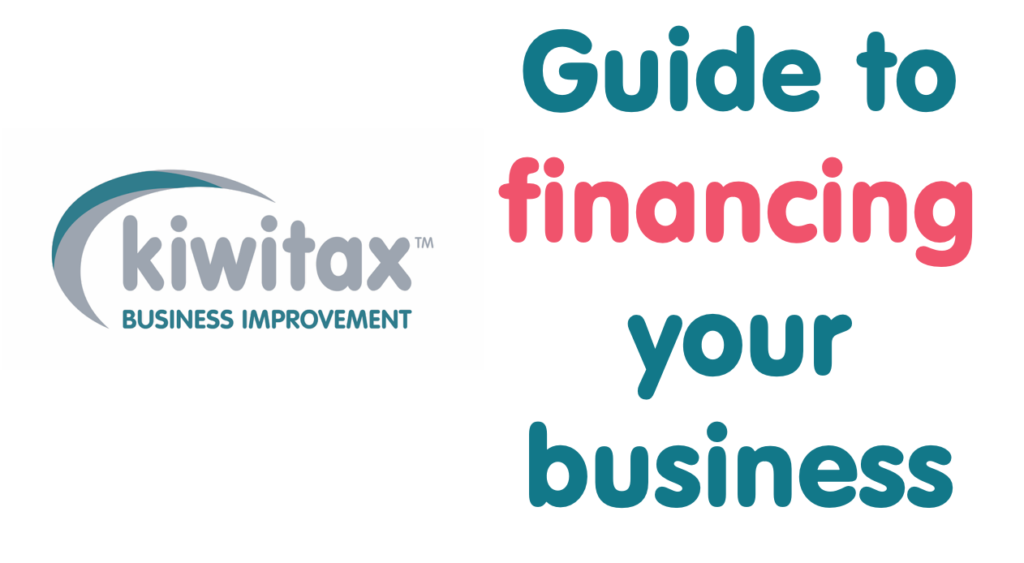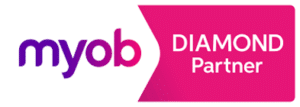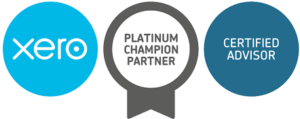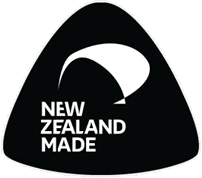
Growing your business can be a frustratingly slow process, especially when you have a window of opportunity in the market that you want to take advantage of, this guide to financing your business can help.
To speed things up, some businesses might increase their marketing and sales efforts or market coverage to take advantage of the opportunity. This can require more cash in the short term than what the business has access to, this is called “going cashflow negative” which will require the business to have a robust plan and access to external sources of finance.
Similarly, a business may require a new piece of machinery or plant to produce extra manufacturing capacity, create efficiencies or entirely new products and purchasing that plant may require more cash than the business currently has at its disposal.
Some businesses may wish to undertake R&D activity that doesn’t generate immediate cashflow which requires short term financing while others may just need to increase their working capital to cover their day to day cash requirements.
On the flipside, if a business requires finance to cover its tax obligations or paying suppliers this could indicate an underlying cashflow issue.
Depending on the finance requirements of the business this source of finance can come in one or a mix of different types and each requires a different approach to access.
Debt and Equity
Essentially there are two main sources of external finance for businesses; being debt or equity.
Debt finance – Is raising capital (cash) by borrowing money that the business will need eventually to repay with interest. This can be either in the form of a loan, overdraft, invoice financing or even a credit card. Debt is a useful tool that can improve your return on equity from your business but, poorly managed or excessive debt can quickly become a burden or worse, can kill a business. Leveraging the equity you hold in the business with some debt can improve your return on equity (ROE) which is a good thing.
Equity finance – Is raising capital by selling a share (or shares) in the business itself. The main benefit is that you do not have to pay back the initial sum or interest as you do with debt but you will be diluting your ownership in the business and his will mean you will be sharing any residual dividends with these other owners. Some benefits from having new equity partners in the business can mean that your risk is shared, and you potentially have others to call on for help or ideas for the business.
In New Zealand there are grants available from various organizations for funding certain business activities like R&D or growth which we will discuss separately at the end of this article.
Getting Started
The first place to start is to determine exactly what you need finance for and how much money you need. To do this you will need to produce a business plan and a cashflow forecast.
The business case will help to validate your justification for finance, build up your confidence around the plan, and will help any potential financiers assessing your loan application or investors with assessing your investment proposition.
Your business case should include at a minimum:
- Goals – Detail of exactly what you are wanting to achieve
- i.e. Launch new product X
- Achieve sales of Y
- By date Z
- Plan – How you are going to go about it, including what you will use finance for
- i.e. Purchase a widget maker 3000 @ $500,000
- Develop and launch new marketing campaign $10k / month
- Employ 2 new production staff @ $50k each / annum
- Launch new product into X markets
- Risks – What risks are involved and how you might mitigate these
- i.e Risk of softer sales than predicted
- Parallel launch into other additional markets
- Reprice and reposition
- Risk of not finding appropriate staff
- Delay launch until suitable HR available
- i.e Risk of softer sales than predicted
- The market – Market information such as;
- Number of potential customers
- Types of customers
- Competitors
- What is your competitive advantage?
- Financials
- Cashflow forecast
The cashflow forecast is a very useful tool that will allow you to plug in variables such as if your predicted sales are lower or higher than what you anticipate seeing and what effect it might have on the business over time. These “sensitivities” are helpful in developing your risk mitigation plans.
Secondly, you will need to determine what is the best approach to finance your business and what is your ideal capital structure, that is, will you pursue debt finance, equity finance or a mix of both.
While debt is cheaper than equity (especially when interest rates are low) to determine the optimal capital structure and amount of debt leverage to use in your business, you will need to assess the weighted average cost of capital (WACC) and debt to equity ratios first. The risk in having a poorly structured balance sheet is that you could jeopardise your ability to raise additional capital in the future.
These are complex financial equations that your accountant can help you to work out and recommend an appropriate structure for your business.
Options for Debt Finance
Debt finance is the most common form of business financing as it is reasonably easy to access and is a helpful tool for businesses. There are however, widely held misconceptions that debt finance is all tax deductible, but in reality, only the interest component of debt is tax deductible. Sometimes though, an asset being financed may have beneficial tax implications, your accountant will be able to advise you.
Friends and Family Loans – Frequently the very first seed capital for a business comes from friends and family. This source of finance can be a double-edged sword, as these “loans” very often don’t have any documentation or expectations set around repayment or interest and that can lead to conflict. If you intend on borrowing money from friends or family, you should have a formal loan document drawn up so that everything is agreed upfront.
Bank Loans – Banks are always looking for opportunities to lend money and business financing is one area where they focus. You will generally need to provide your bank with a business plan, cashflow forecast and a balance sheet and you may also be required to sign a personal guarantee. Some banks may impose covenants (conditions) such as maintaining a minimum equity ratio in the business in order to qualify for the loan. Interest rates for a business loan are generally less than those for an equivalent personal loan.
Overdrafts – Another area that banks like to lend on is for overdrafts, especially since these can generate high levels of interest for the bank so be wary. Overdrafts can be useful for financing short term cash requirements like for working capital. Most banks will provide a limited overdraft facility without the need for a business case, but they may ask for a cashflow forecast or for a balance sheet.
Invoice Financing (Factoring) – Invoice financing usually comes from specialty finance companies that offer to “buy” your unpaid invoices from you at a cost. Businesses use invoice financing to bring their cashflow forwards, but this can be a very expensive finance option. You don’t generally require a business case, cashflow forecast or balance sheet for invoice financing as you are only borrowing against revenue that has already “been earned”.
Credit Cards – Finally credit cards are another source of finance for business though, like invoice financing, the interest costs can be very expensive, particularly if the debt isn’t managed well or if the finance is used for the wrong purpose. Like overdrafts, limited credit cards facilities are available for business use without a business case, cash flow forecast or balance sheet. Another benefit of credit card finance is that you can earn Airpoints or other incentives in your business expenses.
Options for Equity Finance
If you are looking at raising capital from selling equity in your business, we recommend you engage the services of an expert before you set out on this path as there are many traps and legal requirements and if you don’t get it right it can be very difficult to “undo” things later.
Friends and Family Investment – Raising capital from friends and family has benefits and disadvantages. Benefits are that you have an existing relationship with them so could probably raise money from them more quickly and more easily than from an outside investor. Often family or friend investors require a board seat with their investment, and this can be helpful for sharing the load and making decisions on business direction and strategy. Disadvantages are that it makes it difficult to separate your business relationship from your private relationship with them, and if things don’t go well, this can affect your private relationship too.
Angel Investment – Angel investment refers to early stage external investment (seed capital) in young or even pre-revenue businesses. Organisation such as Ice Angels or Hawke’s Bay Angels have emerged to stimulate this market, putting seasoned investors together with budding young companies. The Angel group can help with developing and documenting your business case, business valuation and pulling together your investor “pitch” presentation and information memorandum documents. Angel investors are often industry veterans and can provide far more value to a business than the sum of their investments through experience, advice and direction. Most angel investors would expect a board seat with their investments. This is a very popular early stage financing step for businesses that are serious about growth.
Venture Capital Investment – Venture capital investors or VC’s typically invest larger amounts and at a later stage than angel investors. Amounts of $2M plus are not uncommon for businesses with global growth ambitions. In New Zealand there are a few well known VC firms, notably the New Zealand Venture Investment Fund which is a government backed business investment vehicle and Movac which is one of the largest VC’s in New Zealand and is backed by Sam Morgan of Trade Me fame.
Crowd Funding – Crowd funding refers to raising capital through smaller investments from many investors, it is a relatively new option for sourcing finance in New Zealand with crowd funding platforms operating in NZ since 2014. In 2017 the average investment size was $5,000 per investor per deal. There are two main types of crowd funding, funding for equity and funding for rewards.
Crowd funding platforms for rewards such as Kickstarter are where “investors” receive a reward for their investment i.e. for $200 you receive product X or for $500 you receive 2 x Product X and a signed t-shirt etc.
Crowd funding for equity platforms such as PledgeMe and Snowball Effect on the other hand sell shares (equity) in business instead. The popularity of crowd funding platforms comes from their ease of use as they help with the whole process of funding and because of the size of their investor networks and exposing investment ready business to a large pool of investors.
Snowball Effect help business manage different types of investment offers and helps with documentation, valuation assessment and demand testing, investor sourcing and independent director sourcing. They list their costs as a one-off fee of $5K plus a success fee of 7.5% of total capital raised.
Crowd funding is a popular option for companies looking to raise up to $2M per year without needing a registered prospectus or product disclosure statement.
Tools and Templates
Debt to Equity Ratio – The amount of equity in the business relative to debt, a high ratio indicates that a business might have too much debt (leverage). The ratio is calculated by dividing the total liabilities (debt) by the amount of equity in the business. These numbers are found in the balance sheet.
Weighted Average Cost of Capital (WACC) – The WACC helps business to understand the effects of different leverage ratios (amount of debt to equity) and real cost of debt. This is a really complex formula and is best calculated by an accountant.
Return on Equity – Indicates the underlying profitability in the business relative to equity and helps to understand the net effect of debt or financial leverage. It is calculated by dividing net income by total equity. Again, these numbers can be found in the balance sheet.
Cashflow forecast – A forward looking report of cashflows for a business (typically 12 months), with detailed assumptions and risks, Kiwitax (https://kiwitax.co.nz) can develop a cashflow forecast for customers as part of the business improvement services.
Business case – A document outlining a business plan with goals, tactics, risks and assumptions and market details to help justify and communicate the plan. Again, Kiwitax (https://kiwitax.co.nz) can help with developing a business case as part of the business improvement services.
Information Memorandum – An Information memorandum (IM) is a collection of documents designed to inform potential investors about an investment opportunity. An IM typically includes a business plan, cashflow forecast, financial investment details and a terms sheet. There are IM templates and a how-to available on the Snowball Effect website,
Pitch Deck – A pitch deck is a presentation designed to provide high level information about an investment opportunity to potential investors. A pitch deck is preferably no more than 10 slides and should talk about the problem, your solution, why your business is best paced to solve the problem, how you will get there and a bit about you, your team and your story. Here are 30 great examples of pitch decks.
Grants
New Zealand Trade and Enterprise (NZTE) International Growth Fund (IGF) – The NZTE IGF is available to help New Zealand businesses with a desire to expand globally with cash, advice and resources to help exporters grow.
Regional Business Partners Network – The Regional Business Partners Network is designed to support eligible businesses with grants to help build capability and grow through its voucher scheme. Kiwitax are a preferred training provider to the scheme and RBPN can support businesses with funding up to 50% of training costs up to a maximum of $5000 per annum.
Callaghan Innovation – Callaghan Innovation (CI) are a New Zealand Government organisation charged with fostering New Zealand’s innovation economy. CI offers grants for eligible businesses undertaking R&D activities through a series of grants available on their website.
Regional Economic Development Grants (Councils) – Most councils will provide support for business that can demonstrate and positive outcome for the region they operate in, sometime the support comes in the form of space or even cash incentives like grants. Get in touch with your local council economic development team to enquire in Napier and Hastings.
Te Puni Kokiri (TPK) Maori Business Development Grants – TPK offers grants for Maori business development.
Westpac (bank) grants – Westpac (and most banks) offer some form of growth grants for aspiring business to apply for, they usually have basic assessment criteria and offer mix of cash and advice, see Westpac’s grant details here.
About Kiwitax – Award winning business improvement, tax and accounting service
Here’s the thing. As a business, rental property owner or start-up, you get a kick out of having your own gig. But chances are dealing with your tax and accounting leaves you cold. Good news! We love it, so hand it over to Kiwitax and we’ll look after it all for you.
Whether you deal with us online, by phone or drop into our Napier office, you’ll find a friendly, professional hardworking team ready to work with you, however you keep track of your financial information and from wherever you do business. And all for a fixed price.
Plus if you’re at a loss to know how to improve aspects of your business – from growth planning to cashflow management, even tax debt and so much more – we’re all over that too. Our Business Improvement advisors can help you make a plan and put it into action.
Kiwitax are a preferred training provider for Business Improvement services through the Regional Business Partner Network Capability Voucher Scheme. This is a government funded scheme designed to boost business capability by providing funding of up to 50% of approved training programs with specified training providers up to a maximum value of $5000.
If you liked this article and want to make improvements in your business, with quarterly coaching sessions specifically tailored to support you to identify and achieve your business goals, lets chat!
Disclaimer
Information in this article is general in nature and should not be taken as financial advice. Kiwitax recommends that you seek advice specific to your business situation from a financial advisor, your accountant or a lawyer before making any decisions or taking any actions as described in this article. Kiwitax accepts no liability in connection with this information.



